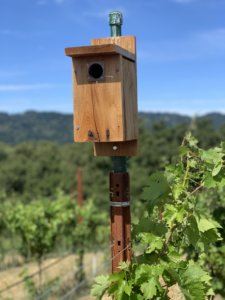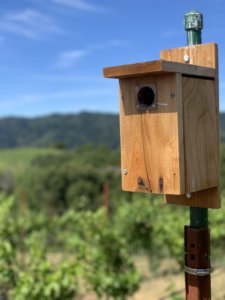Bringing the Croatian Zinfandel to Monte Bello
Blog Post
Given that zinfandel is known as the “California Grape,” it may come as a surprise that zinfandel originated in Croatia around one thousand years ago. In addition, zinfandel’s historic name is actually Tribidrag.
This is especially important as these grapes make up one of Monte Bello’s newest arrivals: zinfandel from Croatia.
Though we made our first few barrels of zinfandel in 1964 from 19th century vines near the base of the ridge, our very cool climate is not well suited to the variety. It needs a warmer region like Sonoma or Napa to consistently ripen. So why are we planting zinfandel here at Monte Bello?

Zinfandel’s Californian Legacy
As an early pioneer of zinfandel, Paul Draper sought out old-vine vineyards from Sonoma and Napa to Paso Robles and the Sierra foothills as early as the 1960s. The planting of the Croatian clones (zinfandel’s long lost brothers) is one of the more recent results of Paul’s influence on zinfandel’s legacy in California.
Ridge supported efforts to search out and identify the handful of zinfandel vines that had survived in Croatia. And after ten years, only eighteen vines have been found. The first vine identified was a young vine in a recently replanted vineyard near the coast. It was a variety unknown to local growers who invented a name for it referencing their region, Crljenak Kaštelanski.
Then, two old vines were discovered in a village on the cliffs above the coast. The locals knew it well: earlier it had been widely planted in their area and carried the name Pribidrag with one letter changed over the centuries from historic Tribidrag.
Ridge arranged to have cuttings from the young vine and two older vines imported and any viruses eliminated. Those became the three clones first planted in our Lytton Springs vineyard in an experimental block.

Why Plant Zinfandel at Monte Bello?
We needed a “mother block” to provide clean cuttings for future planting at Lytton Springs. We selected a plot at the Rousten Ranch, the only part of Monte Bello planted entirely to clean clones of the Bordeaux varietals and a small amount of clean Chardonnay.


Zinfandel is traditionally head pruned as in all our vineyards, but in this “mother block” it’s cordon trained to narrow the distance between both the rows and vines. This is in order to produce as much bud wood as possible for future planting given that the cordon produces many more canes. Likewise, the spacing matches the cane pruned cabernet rows at Rousten and allows for tractor access.
Led by David Gates, Senior VP of Vineyard Operations, and Viticulturist Kyle Theriot, this project at Monte Bello marked Ridge’s second commercial planting of Zinfandel’s Croatian sibling. The clones included the two Pribidrag vines and one Crljenak Kasteljanski vine.
As a Mother Block, this parcel is used initially for the purpose of harvesting bud wood (as opposed to fruit) that will then be used for plantings at Lytton Springs.
How the New Zinfandel Was Planted
Tucked away in the Hills of the Rousten Ranch, the “Mother Block” sits at an elevation 2,200 feet. It’s isolated from our other traditional plantings in order to minimize exposure to viral infections, such as Grapevine Leaf Roll or Grapevine Red Blotch.

When brought to Rousten, the infant vines’ roots were trimmed prior to planting. Any knotted or stringy root growths were removed to promote the growth of new roots that will expand vigorously into the soil. The vines were planted in virgin soil, and an organic fertilizer was added to further promote the vine’s growth.
As these vines grow, resident Viticulturist Kyle Theriot and his team trim each vine back to two buds until they grow a shoot strong enough to become the trunk of the vine.
Over the next few years we will be looking after the development of these new and exceptional vines, and we look forward to sharing the wines they produce in the coming years.
Wait!
In order to qualify for user related discounts, you must log in before proceeding with checkout. Click the button below to log in and receive these benefits, or close the window to continue.
Log In